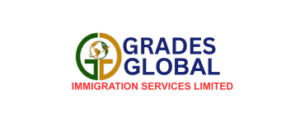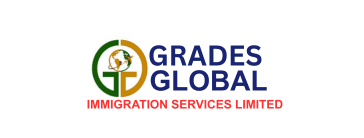Currently, there are no significant changes expected in Canada’s immigration levels in the near future. By 2024, the nation is projected to welcome approximately 485,000 new immigrants. Moreover, Canada will likely admit 500,000 immigrants annually in 2025 and 2026 based on reliable forecasts.
Table of Contents
In many respects, these targets align with the objectives outlined in the Immigration Levels Plan between 2023 and 2025. An update on the number of immigrants expected to enter each category was made public between 2024 and 2026.
Canada’s immigration policies maintain a consistent and strategic approach to managing the influx of newcomers, ensuring a well-regulated and sustainable immigration system. However, Canada Permanent Resident Visa also plays a crucial role.
What are the Express Entry and Provincial Nominee Programs?
The following is a quick overview of Canada’s top two economic immigration routes:
Express Entry
‘Express Entry’ is the federal government’s system for managing immigration applications for permanent residence from three economic-class immigration programs. A number of programs are available to skilled workers, including the Federal Skilled Worker Program (FSWP), the Canada Provincial Nomination Program, Federal Skilled Trades Program (FSTP), and the Canadian Experience Class (CEC).
By late June 2023, Canada will conduct two distinct types of Express Entry draws, the “standard” draws and the category-based draws. According to the “standard” Express Entry points system, ranking is primarily determined by a candidate’s Comprehensive Ranking System criteria (CRS). In each draw, a limited number of candidates are granted an Invitation to Apply (ITA) for permanent residence in Canada. A candidate will only be eligible to receive an ITA if their CRS score exceeds the cut-off score set for that particular round of invitations.
Note – The Immigration, Refugees and Citizenship Canada (IRCC) has implemented the International Experience Canada (IEC) program, which serves as the sole avenue for Canadian immigration applicants to pursue permanent residency in the United States.
Moreover, the IRCC has recently introduced category-based draws, designed to attract individuals possessing specialized work experience and skills that align with Canada’s unique labor market demands. This strategic approach enables Canada to effectively tackle its specific labor market challenges.
The IRCC intends to prioritize the following six categories through category-based draws in 2023:
- Proficient in the French language
- Experience working in the healthcare industry
- Experience in STEM-related professions
- A work experience in a trade occupation
- Transport-related work experience
- Agriculture and agri-food work experience
PNPs
The provincial and territorial governments can designate particular immigration candidates considered the most qualified candidates for addressing specific employment and economic challenges within their respective regions by establishing Provincial Nominee Programs (PNPs).
Consequently, PNPs serve as a critical instrument in the equal distribution of immigration’s economic, social, and cultural advantages across the nation. It intends to attract a higher number of immigrants to settle outside of the major metropolitan areas of Vancouver, Toronto, and Montreal.
An analysis of immigration targets based on class
The Canadian government expects to welcome approximately 281,135 immigrants under the economic class in 2024, representing 58% of the annual target. According to estimates, this number will increase to 301,250 immigrants by 2026, or 60% of the yearly target.
A total of 114,000 immigrants will be admitted in 2024, representing 24 percent of all admissions. This number is expected to increase to 118,000 immigrants by 2026, representing 24% of all admissions.
There will be 89,865 immigrants admitted as humanitarians in 2024, or approximately 19% of all admissions. These figures include refugees, protected persons, and immigrants admitted for humanitarian, compassionate, or other reasons. In 2026, the target number of immigrants is 80,832, or 16% of all admissions.
Please note that rounding may cause figures not to add up to 100%.
Which program will lead to permanent resident admissions from 2024 to 2026?
As the country’s foremost economic immigration pathway, the Provincial Nominee Program (PNP) has surpassed the targets set for theCanada Express Entry system in November 2022, as outlined in the Immigration Levels Plan for 2023-2025.
In the preceding year, a total of 83,500 new permanent residents (PRs) were invited to Canada through PNPs across the nation. Looking ahead to the 2023-2025 Immigration Levels Plan, the Immigration, Refugees and Citizenship Canada (IRCC) has set a PNP target of 105,000 PRs by 2023. Thus, the targets for 2024 and 2025 have been established at 110,000 and 117,500 respectively.
According to the most recent Immigration Levels Plan (2024-2026) released by the IRCC, it is predicted that Canada Express Entry Program will regain its position as the leading economic migration pathway in Canada by 2024. However, based on the current admissions targets for Canada, the PNP will claim the top spot among all economic immigration pathways in 2025 and 2026.
Breaking down Express Entry and PNP targets for 2024-2026
Specifically, Canada targets the following numbers of admissions under Express Entry and PNPs under the 2024-2026 Immigration Levels Plan:
2024
Number of people who got in through Express Entry (High Skilled): 110,770
PNPs: 110,000
2025
PNPs: 120,000
Inclusion in Express Entry (High Skilled): 117,500
2026
PNPs: 120,000
Federal high skilled workers (Express Entry): 117,500
Increasing targets for Express Entry and PNP
According to Express Entry, the target number of permanent residents admitted to the country will be 110,700 in 2024 and 117,500 in 2025 and 2026.
During 2024 and 2025, the Provincial Nominee Program (PNP) will target 110,000 immigrants, and again in 2026, it will aim for 120,000 immigrants.
The target for sponsorship of spouses, partners, and children is 82,000 admissions in 2024, rising to 84,000 admissions each in 2025 and 2026. Similarly, the Parents and Grandparents Program (PGP) will target 32,000 immigrants in 2024, followed by 34,000 immigrants annually in 2025 and 2026.
The Canadian government is stabilizing immigration levels.
A recent statement by the government explains their decision to keep their targets unchanged. They claim that this plan aims to support economic growth, as well as taking into consideration the pressures on housing, health care, and infrastructure.
They believe population growth can be sustainable and stable if a responsible course is charted. To achieve this, the government plans to stabilize permanent resident levels at 500,000 by 2026. This will allow enough time for successful integration while boosting Canada’s labor market.
Moreover, the government intends to adjust the number of temporary resident admissions in the coming year. This is to ensure that this aspect of our immigration system remains sustainable. With these measures in place, the Canadian government is taking a proactive approach to managing immigration levels effectively.
In non-election years, the federal government was required to release its annual immigration plan by November 1. It was all in compliance with the Immigration and Refugee Protection Act. This plan outlines how many new permanent residents will be allowed into Canada over three years. They divide it into three categories: economic, family, and humanitarian.
Ultimately, the Immigration Levels Plan is designed to benefit Canada in several ways. First off, they want to boost the economy, so they’re always looking for ways to bring in skilled workers and all that. Then there’s the whole thing about reuniting families. They want to ensure families can be together in Canada, so they have to figure out how to make that happen. And lastly, they’re trying to make Canada a haven for people escaping all sorts of bad situations.
Also, the number of immigrants coming into Canada has increased. In 2022, they admitted a record-breaking 437,000 immigrants. That’s a whole lot of people! And get this: in 2023, they expect to admit even more – around 465,000 permanent residents. It shows how Canada is becoming an even more diverse and welcoming place.
Canada pursues a new immigration strategy.
Canada launched a new strategy to improve its immigration system one day after unveiling the Immigration Levels Plan 2024-2026. Immigration Minister Marc Miller outlined a new approach to modernizing immigration on October 31. Miller acknowledged shortcomings in the country’s immigration system.
Three main goals are outlined in the new strategy, entitled An Immigration System for Canada’s Future:
- Enhance the welcoming environment for newcomers
- Make sure that immigration meets the labor market’s needs
- Develop a comprehensive and coordinated growth strategy
- The IRCC strives to improve the interaction between its clients and its services.
Furthermore, the IRCC would like to see Canada’s immigration policies aligned more closely with the country’s skills and labor strategy.
To ensure that the country’s growing population of newcomers has access to adequate housing, health care, and infrastructure, IRCC would like to develop an integrated plan between all three levels of government.
Immigration to Canada started to rise in the late 1980s
As early as the 1980s, Canada shifted its immigration strategy toward its present form. A more practical alternative was for the government to set immigration targets based on the economic conditions at the time rather than planning for future immigration needs.
The number of immigrants in Canada in 1984 was less than 90,000. The Conservative government of the 1990s, which controlled the federal government then, realized that there would soon be a labor shortage and increased immigration targets to 250,000 new permanent residents.
After its election in 1993, the Liberal government increased immigration targets. A recession also led the government to focus more on admitting new immigrants from the economic class and reducing the number of immigrants from the family and humanitarian classes.
Since the election of the current Liberal government in 2015, approximately 260,000 immigrants have been admitted each year. As part of the current federal administration, led by Justin Trudeau, the target was increased to 300,000 and then to 340,000 shortly before the beginning of the COVID-19 pandemic.
The number of immigrants admitted to the country broke its record in 2021 despite pandemic restrictions.
According to several polls, Canadians are less inclined to immigrate than they were two years ago due to the current affordability and housing shortage.
The IRCC, however, maintains high immigration targets despite a shortage of skilled labor and an aging population. The most recent population estimate from Statistics Canada indicates that 98% of Canada’s population growth is attributed to new immigrants.
According to the most recent job vacancy data, there were 701,300 vacancies in Canada as of July 2023. It is still significant enough to cause IRCC to alter major immigration programs and systems, like Express Entry, even though there have been 273,700 fewer open positions in a year-over-year comparison.
The IRCC introduced a category-based selection round earlier this year for Express Entry candidates with work experience in in-demand sectors or the ability to promote the French language outside of Quebec. This was intended to assist Canada in closing its labor force deficit by attracting economic immigrants.
The province of Quebec also announced immigration plans.
Quebec has announced its immigration plans for 2024 and 2025. Unlike other provinces in Canada, Quebec can set its own admissions targets for permanent residents due to its special status. Consequently, Quebec is uniquely positioned to shape its immigration targets while maintaining its distinctive francophone identity. According to the latest update, Quebec intends to welcome 50,000 immigrants in 2024 and 2025. The decision demonstrates the province’s commitment to fostering an inclusive and diverse society.

